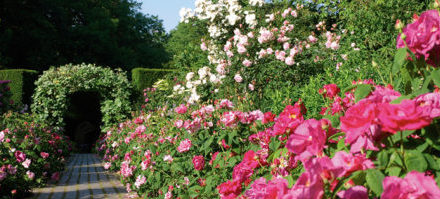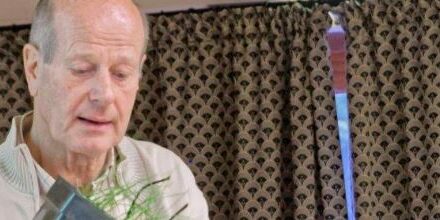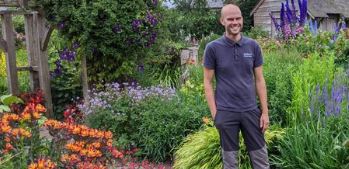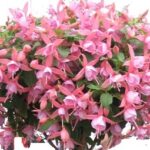Meeting: April 2018
Our speaker this month was Helen Picton from Old Court Nurseries and the Picton Garden from Colwall, near Malvern. Helen comes from a long line of horticulturalists and is the third generation of her family to be involved in the breeding and cultivation of Michaelmas Daisies.
Michaelmas Daisies are of the Asteraceae family which is the second largest family of plants with over 1600 different genus from all over the world. Even Dahlias belong to the Asteraceae family.
Helen explained that despite appearances the head of a Michaelmas Daisy is made up of hundreds of tiny florets – which make up the centre of the bloom known as the disc – the part of the plant which is attractive to the insect pollinators. Gardeners are generally more interested in the petals (or raised florets) of the flower and in particular the range of colours.
The name Aster means star like and the plant has been known since ancient times. In earlier times it was called Starwort. In recent years there has been a re-evaluation of the many different species from different parts of the world with new names now being attributed to the existing groups. The heyday of the Michaelmas Daisy was in the large country estate gardens of late 19th century and early 20th century with the development of the more naturalistic approach to borders as extolled by such famous gardeners as Gertrude Jekyl and Vicary Gibbs.
The founder of Old Court Nurseries, Ernest Ballard (from a wealthy Herefordshire family), led the way in the breeding of new stronger colours and more complex flowers (from about 1907 onwards until his death in 1950) making Michaelmas Daisies freely available to the ordinary gardener. Post the Second World War, Helen’s grandfather – Percy Picton – took over as Nursery Manager and the 50’s and 60’s saw Michaelmas Daisies become hugely popular with numerous new varieties coming onto the market.
By the 1970’s however they fell out of favour (as did many old herbaceous border favourites) and many cultivars were lost.
Largely thanks to the work and dedication of two ladies from Bristol, Miss Allan and Miss Heuish, who began collecting in the 1940’s many cultivars were saved and eventually the Michaelmas Daisy was recognised by the Plant Heritage Society as one of the first National Collections.
Today Asters rightly have a place in any garden and there are varieties to suit all soil types, every height requirement and almost all colour needs (except reds, yellows and oranges). Helen gave us a wide ranging list of some of the many hundreds of cultivars available in this country today with tips on cultivation and propagation.
The most important requirements seemed to be to provide a rich, moisture retentive soil and to divide regularly.
Her closing advice to her very attentive audience was that there is no excuse for poor colour in autumn and her slides certainly demonstrated this – from good companion plants with other herbaceous perennials, good performance in containers and excellent cut flowers.








